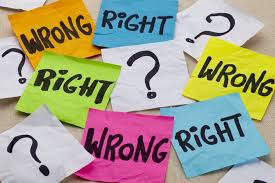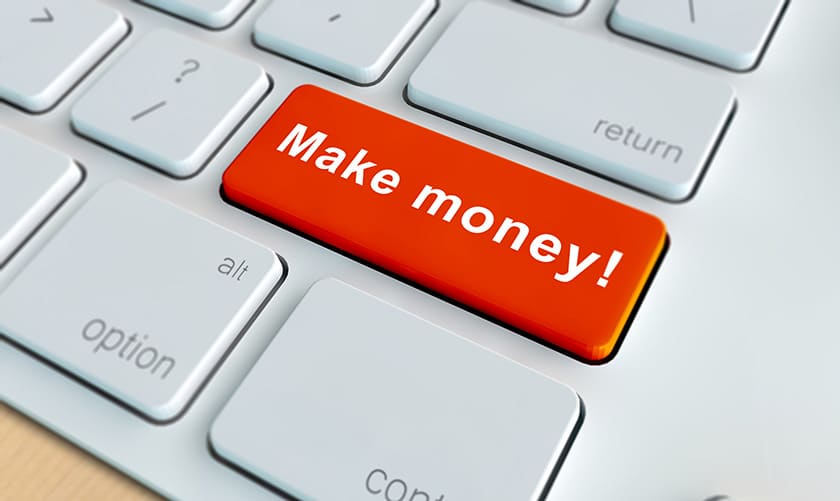Any item that informs your customers about who you are and what you do is referred to as marketing collateral. Nevertheless, there are so many different forms and examples of marketing collateral available in the corporate world that deciding which one to employ can be difficult.
What Is Marketing Collateral?
Any media content used to promote a company’s products or services is referred to as “marketing collateral.” Print materials such as posters and flyers are included, as well as digital content such as catalogs and digital publications. Marketing collateral is anything that can be used to express your company’s brand message.
The shift to online media has provided businesses with limitless opportunities to promote their goods and services. You may now send customized emails to as many people as you wish, which act as portals to all of your other material.
What Type of Marketing Materials Should You Use?
Varied forms of collateral serve different objectives and are mostly dependent on how deep down the marketing funnel your prospects are. Some potential clients may be ready to buy your product right now, while others are still weighing their options. It’s critical that you target each group with varied content tailored to their stage of the buyer’s journey.
What Is the Best Way to Create Amazing Marketing Collateral?
Developing marketing collateral “To have anything” isn’t worth the time, money, and effort it takes to create and distribute. For functional and professional-looking marketing collateral, you’ll need a strategy, goals, and skilled employees. But it is not easier said than done. Not always, to be sure. All you need to know is where to begin.
#1. Prioritize Your Audience
While it seems self-evident, when developing marketing collateral, you must have your target audience in mind. Who are you conversing with? What are their worries, motivators, preferences, and dislikes? Understand who you’re speaking with and how you may assist them in making a decision, solving an issue, or achieving whatever objective they have in mind. Only then will you be able to achieve your goals.
#2. Maintain Brand Consistency
Your brand should remain consistent irrespective of how varied each piece of marketing collateral is. You need consistent quality, whether you want your developers to use the same color in all of their logos or your marketing team to exclusively utilize stock photographs with a specific look and feel. Establishing brand rules is crucial to preventing misuse. Technology, such as a digital asset management (DAM) system, can also assist by making sure that customers only have connections to authorized and on-brand marketing collateral and design files.
#3. Allow Information to Guide Your Judgments
You can generate marketing collateral every day, but it’s not worth it unless you know (truly know) that it’s effective. Determine what’s working and what isn’t so you can improve your efforts. Consult with clients to determine what material they require, but don’t forget to look at the stats. Google Analytics, DAM Insights, and even examination of unique identifiers like redemption codes are excellent sources of usable, hard data.
The Most Important Function of Marketing Collateral
Marketing collateral is the starting point for a brand’s content marketing initiatives. Its fundamental function is to deliver genuine content that aids in the resolution of client wants and difficulties.
Every piece of marketing collateral has a call to action, even if it’s something as simple as encouraging your audience to visit your site or subscribe to your podcast. Whatever you do, all of your materials should function together to help clients through the path to purchase and make a decision.
#1. Raising Awareness
To boost brand awareness in the early phases of the process, you can employ marketing collateral. At this point, your audience is trying to figure out what problems they’re dealing with. Any item that helps them identify your brand’s products or services and promotes your brand characteristics, such as logos and colors, is valuable.
#2. Encourage Thought-Leadership
The purpose of thought leadership marketing is to teach, enlighten, and engage your audience so that you may establish yourself as a credible source in your field. To encourage thought leadership, you can utilize a variety of marketing collateral, such as webinars, podcasts, videos, books, speaking engagements, etc
#3. Make the Value Proposition Clear
You can utilize marketing collateral to demonstrate how your company addresses people’s demands and difficulties. You can draw a customer’s attention to your product or service, then teach and enlighten them on how it meets their needs before persuading them to buy it.
#4. Facilitate Decision-Making
If your audience is towards the end of the funnel and is undecided about whether or not to utilize your product or service, you may use marketing collateral like product pages, retargeting advertisements, and cart abandonment emails to push them to come to a conclusion.
Types of Marketing Collateral
You can choose which sort of marketing collateral you want to use between traditional and digital marketing channels. This will be a beneficial use of marketing collateral for your audience and goals.
Digital Marketing Collateral
This is when you use the internet to sell your products or services. It’s a far cry from traditional marketing methods. Continue reading for a few more examples of digital marketing collateral, along with strategic advice.
#1. Videos
Businesses frequently utilize video to reach out to their audiences and motivate them to take action. It’s not hard to see why. It’s worth your time. With more than half of the marketers choosing video as the content type with the best return on investment (ROI), it’s worth your time. Test the waters and look for formats that can assist you in achieving your objectives. You can do a lot, from how-to explainers and demos to interviews, product overviews, testimonials, and more.
#2. Webinars
They are a type of online seminar or presentation that takes place over the internet. Many companies hold live webinars that include audience involvement. That isn’t the only choice, though. Webinars that have already been recorded are, likewise, a popular option. In any event, repurpose the knowledge from your webinar into other marketing collateral, such as blog posts, to get the most value out of it.
#3. Infographics
Are you looking for a way to deliver information in an easy-to-understand format? Infographics could be the answer. Infographics are visual representations of facts or data that provide readers with a welcome respite from dense prose. They’re wonderful for conveying stories, simplifying complex concepts, and capturing the attention of an audience. Just keep in mind that your brand should be identified no matter how imaginative you become.
#4. Reports
Reports are a wonderful approach to sharing your learning and demonstrating your subject matter authority and passion if you have unique research, data, or discoveries. Furthermore, with so much incorrect information floating on the internet, individuals value accurate information backed by research. They might even quote you! Do you require a report example? Check out the Widen Connectivity Report, which is published every year.
#5. Sell Sheet
A sell-sheet, also known as a one-sheeter, is a downloadable document or webpage that outlines a product’s or service’s most attractive benefits, features, and attributes. Readers aren’t overwhelmed by the most successful sales sheets. They are thorough, yet they rely on visuals to convey vital information, such as the appearance of a product.
#6. E-books
Long-form information created by individuals or businesses to educate readers and display their expertise on a certain topic is known as an e-book. While white papers are likewise instructional, e-books are more enjoyable and less technical or in-depth. Because they’re considered premium content, you may ask for an email address or perhaps a payment in exchange for access, depending on your plan.
7. Blog Posts
Blogs (also known as articles) are one of the most popular types of marketing collateral, and they’re a great way to acquire new customers and assist existing ones. You can write blogs for your website or contribute as a guest author to partner sites to demonstrate your knowledge. Just make sure the material you’re creating is beneficial to your audience rather than just a way to market your products and services.
#8. Websites
Although most people do not consider their company’s website to be marketing collateral, it is. In truth, it’s a carefully curated compilation of some of your most effective marketing materials. Isn’t that where the majority of the cases on this list would reside? Furthermore, every standalone landing page or deep-dive pillar page you produce adds to your marketing collateral.
#9. Visual Content
Many of the examples above, such as infographics and movies, are instances of visual content. Even text-based marketing collateral, such as a blog, can be considered visual content if it includes photographs, infographics, videos, or other visuals. The word is a bit of a fuzzy area, but it’s worth revisiting. Whatever you name it, visual content is visual marketing collateral. Is it possible to create a whitepaper or report with visual elements? Content that is visually appealing. GIFs, memes, schematics, screenshots, or product photos as stand-alone brand assets?
#10. Publications
Press releases detail your company’s most noteworthy achievements, such as honors. You can put them on your webpage and print them off to hand out to potential customers.
#11. Sponsored Content
Sponsored content is prepared with the intention of being published in a news publication. Companies pay media publications to develop content that reads more like a news item than an advertisement. This is the crucial differential. The content doesn’t have to identify their product or service, but it should be consistent with their identity and include their emblem to identify them as a sponsoring partner.
#12. Comparison of Product Pages
Buyers are weighing their alternatives at this point, which includes assessing products and services. It’s to your greatest advantage to set up one or more product comparison pages on your website so that you can manage the information. Yes, you need objectivity, but at the very least, your product information will be correct.
#13. Products Pages
The online counterparts of paper product catalogs are product pages. They go into as much information as possible about the advantages and benefits of your products or services.
#14. Portfolio Pages
Your portfolio, in addition to testimonials and reviews, is a fantastic way to show off your innovation. It demonstrates that you’re doing a good job and that your efforts are appreciated. It’s also beneficial for employer branding and attracting new partners because they can see what you’re up to at a glance.
#15. Solution/Industry Pages
An example is when your product or service is applicable to a variety of industries, you should create a vertical page for each industry or solution type. Select the key industries with whom you operate, develop some use cases for each vertical, and publish the information on your website.
Traditional Marketing Collateral
In this day and age, traditional marketing has a place. It still uses pre-internet methods including print, display, and mail, for example. For many firms, it is still a viable option. It provides enterprises with a mechanism to break through noisy web environments in some circumstances. Others find it the most effective approach to give customers a mild shove (along with actual stuff) following an in-person meeting or trade fair.
#1. Displays
Displays or exhibits in key positions occur in a variety of shapes, sizes, and styles. Some examples include billboards on the side of the road, shelf signs, point-of-sale displays, and even engaging kiosks. Start with your objectives to identify the best display for you. Do you require a display that will attract the attention of your customers? Do you want to engage, entertain, or educate your audience? These types of inquiries will aid in the development of your approach.
#2. Brochures
Brochures are booklets that often feature information about a firm and its products or services. They range from simple and affordable books to high-gloss, high-design materials. Brochures should be barcode readers, so always leverage graphics and brief, catchy language or bullets to deliver your story. The dense, long-form stuff has no place in brochures.
#3. Brand Magazines
Brand magazines are often used in one of two ways by businesses: to convey knowledge about the product and services, or to assist their audience using content marketing. The first application is more promotional and contains collateral such as product catalogs. The second technique is more subtle, focusing on articles and information targeted at a specific demographic.
#4. Flyers
Flyers are usually made up of a single A5-sized sheet. To attract clients’ attention, the content must be intriguing and well-designed. Flyers are a powerful type of outdoor marketing collateral because they can be distributed immediately to a large number of individuals.
Examples Of Marketing Collateral
Print materials, and digital information, are all examples of marketing collateral. Similarly, it is vital to comprehend the many examples of marketing collateral. Let’s have a look at some amazing marketing assets from various sources.
#1. Posts on the Blog
Some would argue that blogging is no longer relevant. It’s not the case. In reality, content is still one of the most effective strategies to ensure that your business gets seen by a larger audience via SEO. By providing good material, blogging is an efficient strategy to build brand trust. The ability to contact your target audience while building a community around your brand is the greatest benefit of adopting blogging as one of the marketing collateral examples.
#2. Guides and eBooks
At present, e-books and downloaded instructions are some of the most popular examples of marketing collateral solutions. People love free stuff, especially if it’s amusing and educational, and giving away free eBooks and guides is one of the best ways to keep your audience interested.
Make sure your free manuals and eBooks are searchable and in PDF format. The content should be helpful, actionable, and informative. This is also an excellent strategy to generate leads while growing your email list. Make use of your eBooks and manuals to assist your target audience in dealing with problems. Visitors will be more eager to subscribe to your helpful email list, where you may quietly pitch your items as part of a solution if you make it your business to supply a solution.
#3. Founders’ and Executives’ Biographies
Along with a page on your website dedicated to founders and executives, bios are examples of a type of marketing collateral, that serves as social proof for potential clients by informing them about the accomplishments of executives and founders. This is the most effective way to link a company’s success to its executives’ achievements. Ensure that the successes of the founders and executives in past roles in other companies are included in the biographies.
#4. Study of Cases
Using a case study as one of the marketing collateral examples is a great way to showcase your business without coming across as boastful. Case studies can be utilized to show your audience how you got to where you are now. Furthermore, they are often more effective than blog entries and should be directed toward an audience interested in learning from your business practices.
Case studies are frequently used as a phase in the sales funnel to help a potential client decide whether or not to speak with a salesperson from your company.
#5. Company Honors
Using your company’s achievements as marketing collateral is a great approach to show your prospects what kind of work they can anticipate from you. As a strategy to persuade your prospects about your business, make sure you display your honors and achievements on your website.
#6. The Company’s History
People prefer to conduct business with people they know. Giving potential clients a company background page on your website is the best way to build a connection with them. This should convey the tale of how the business came into existence and how it has been growing. Make sure to reflect your company’s accomplishments, milestones, and values.
Use appealing writing and visuals to make the experience as personal to the firm as possible while explaining your company’s history.
#7. Signatures by E-mail
Many companies use email signatures, but they don’t realize how effective they are as marketing collateral examples. If you have a large email list, a prominent email signature is perfect for marketing your services and products.
Whenever you want to make a positive impact on your customers, especially when following up with leads, use email signatures. To build a brand signature, you can utilize one of the many email signature generators available.
#8. Landing Pages
A landing page is a page on your website to which external links lead. The finest landing pages are those that are solely dedicated to delivering your company’s marketing message. There should be no unnecessary connections or distractions in it.
A landing page is a single page on your website that contains a call to action for anyone who visits it. It should highlight the key features of your product as well as the advantages it provides.
A landing page should be included in every marketing campaign. The good news is that changing or rebuilding a preexisting landing page to fit the needs of diverse campaigns is simple. Using the same home page as a landing page is considerably less effective and campaign-oriented.
The Process of Creating Marketing Collateral
Knowing how to handle the creation process of your marketing collateral is a crucial element of your success now that you know what marketing collateral to utilize. Below are the steps to follow when designing marketing collateral.
#1. Conceive an Idea
You need to come up with a unique marketing material concept. This is the goal behind every piece of collateral you employ. The following questions should be answered by an ideal concept:
- Why is it necessary to use marketing collateral?
- What message do you want your marketing materials to deliver to potential customers?
- What are your objectives for the marketing collateral?
- How should you structure your marketing collateral to achieve your objectives?
#2. The Briefing
After you’ve come up with a notion, it’s time to transform it into a workable proposal. The work plan should provide stakeholders with an overview of the project. Make sure it has all of the necessary information so that all parties involved may use it while working on the project. Make sure your teammates who are working on marketing collateral are aware of the task.
#3. Approval and Review
The job will be considerably easier to complete if you have a precise marketing material brief. When the initial draft is complete, it must be shared with the stakeholders for review and input. Before the final draft is available, the project may go through multiple rounds of evaluation.
When you’re working with high-level customers, you may need to get their approval before using the final copy in your marketing strategy.
Is a Billboard Marketing Collateral?
Marketing collateral includes everything that can be used to get the word out to potential buyers about a business’s goods and services. Leaflets, flyers, business cards, promotional products, billboards, etc. are all forms of marketing collateral that are commonly used in the “real world.”
Why Is It Called Marketing Collateral?
It is called “marketing collateral” because it informs your customers about who you are and what you do, in terms of the products and services you present to them.
What Is the Purpose of Marketing Collateral?
Marketing collateral is useful in providing businesses with limitless chances to promote their goods and services and also target each product with varied content tailored to its stage of the buyer’s journey.
Is a Press Release Marketing Collateral?
At this point in the sales cycle, it’s crucial that potential customers understand how your product or service may help them. Content such as lengthy blog posts, e-books, infographics, brochures, flyers, press releases, and business cards are all appropriate at this point.
What Are Some Examples of Collateral?
- Posts On The Blog
- Guides and eBooks
- Founders’ And Executives’ Biographies
- Study Of Cases
- Company Honors
- The Company’s History
- Signatures By e-mail
What Is Considered Marketing Collateral?
Any media content used to promote a company’s products or services is referred to as “marketing collateral.”
Is Social Media Marketing Collateral?
When promoting a product or service, marketing collateral refers to a variety of forms of advertising that work together to increase demand. Marketing materials include anything that may be shared online, including text, images, videos, social media posts, GIFs, and memes.
Related Article
- Top Email Marketing Platforms: 15+ Best Picks For 2023 (Updated!!)
- Free Email Marketing Software: Best 15+Picks For E-Commerce.
- Is a Personal Loan Good to Take?
- MARKETING CONCEPT FOR SMALL BUSINESS: All You Need to Know (+13 Proven Strategies)
- Email Marketing Platforms: Overview, Common Features, Comparisons






